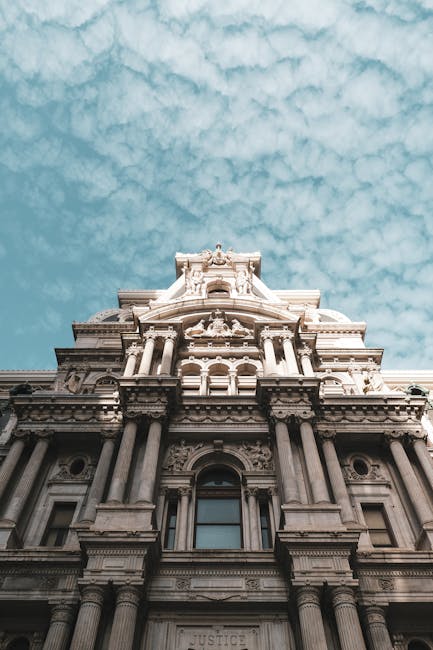Philadelphia’s Historic Buildings: Then and Now
Philadelphia, the City of Brotherly Love, is a city steeped in history. From the signing of the Declaration of Independence to the birth of American democracy, its historic buildings have stood the test of time, bearing witness to pivotal moments in the nation’s past. This blog post delves into the architectural evolution of Philadelphia’s historic buildings, comparing their past glory with their present state. Whether you are a history buff or an architecture enthusiast, you’ll find this exploration both informative and captivating.
The Birthplace of American Independence: Independence Hall
Then: Independence Hall, originally known as the Pennsylvania State House, was completed in 1753. It was the site where the Declaration of Independence and the U.S. Constitution were debated and adopted. The building is a masterpiece of Georgian architecture, characterized by its balanced and symmetrical design.
Now: Today, Independence Hall is a UNESCO World Heritage Site and a part of the Independence National Historical Park. It has been meticulously preserved to maintain its historical integrity. Visitors can take guided tours to learn about its rich history and significance in American democracy.
The Transformation of the Philadelphia City Hall
Then: Completed in 1901, Philadelphia City Hall was the tallest habitable building in the world at the time. Designed by architect John McArthur Jr., it features a blend of Second Empire and French Renaissance architectural styles. The iconic statue of William Penn atop the building was a symbol of the city’s historical roots.
Now: City Hall remains a central feature of Philadelphia’s skyline and continues to serve as the seat of the municipal government. Recent renovations have modernized its facilities while preserving its historic charm. The observation deck offers panoramic views of the city, making it a popular tourist attraction.
The Revival of the Academy of Music
Then: Opened in 1857, the Academy of Music is the oldest opera house in the United States still in use for its original purpose. It was designed by the architectural firm Napoleon LeBrun & Gustavus Runge in the Italianate style, featuring a grand auditorium with opulent decor and excellent acoustics.
Now: The Academy of Music has undergone several renovations to enhance its infrastructure while maintaining its historical elegance. It is home to the Pennsylvania Ballet and Opera Philadelphia, continuing to host world-class performances. The building is a testament to the enduring legacy of performing arts in Philadelphia.
The Evolution of the Philadelphia Museum of Art
Then: The Philadelphia Museum of Art, established in 1876, was initially housed in Memorial Hall, a building constructed for the Centennial Exposition. The current building, completed in 1928, was designed in the Greek Revival style by Horace Trumbauer and Julian Abele. Its grand facade and iconic steps have made it a cultural landmark.
Now: Today, the Philadelphia Museum of Art is one of the largest art museums in the country. It has expanded its collections and galleries, offering a diverse range of art from various periods and cultures. Recent renovations have improved visitor facilities and accessibility, ensuring it remains a premier destination for art lovers.
The Renewal of Eastern State Penitentiary
Then: Opened in 1829, Eastern State Penitentiary was revolutionary in its day, designed to reform rather than punish inmates. Its unique radial layout and Gothic Revival architecture made it a model for over 300 prisons worldwide. Notable inmates included Al Capone and Willie Sutton.
Now: After closing in 1971, Eastern State Penitentiary fell into ruin but was eventually restored and opened as a museum in 1994. It offers guided tours, special events, and exhibits that highlight its history and the evolution of the penal system. The haunted attraction, Terror Behind the Walls, is a popular seasonal event.
The Preservation of Elfreth’s Alley
Then: Elfreth’s Alley, dating back to 1702, is the oldest continuously inhabited residential street in the United States. The 32 houses on the alley represent the typical Georgian and Federal architectural styles of the 18th century. It was home to artisans and tradespeople who contributed to the city’s economy.
Now: Elfreth’s Alley remains a vibrant residential street and a living museum. The Elfreth’s Alley Museum offers guided tours that provide insights into the lives of its early inhabitants and the history of the alley. Preservation efforts have ensured that the historic character of the buildings is maintained.
Actionable Tips for Exploring Philadelphia’s Historic Buildings
1. Plan Ahead: Check the opening hours and tour schedules of historic sites. Some sites may require advance reservations.
2. Take Guided Tours: Many historic buildings offer guided tours that provide deeper insights into their history and architecture. Look for tours led by knowledgeable guides.
3. Visit During Off-Peak Hours: To avoid crowds, consider visiting popular sites early in the morning or on weekdays.
4. Explore the Surroundings: Many historic buildings are located in neighborhoods with other attractions, restaurants, and shops. Take time to explore the area.
5. Respect Preservation Efforts: Follow the rules and guidelines provided by historic sites to help preserve their integrity for future generations.
Conclusion
Philadelphia’s historic buildings offer a fascinating glimpse into the city’s past and its evolution over the centuries. From the iconic Independence Hall to the charming Elfreth’s Alley, each building tells a unique story of architectural innovation and historical significance. Whether you are a resident or a visitor, exploring these landmarks is a journey through time that enriches your understanding of Philadelphia’s rich heritage.
By preserving and celebrating these historic structures, we honor the legacy of those who came before us and ensure that future generations can continue to appreciate the architectural and historical treasures of Philadelphia. So, the next time you find yourself in the City of Brotherly Love, take a moment to step back in time and marvel at the enduring beauty of its historic buildings.
